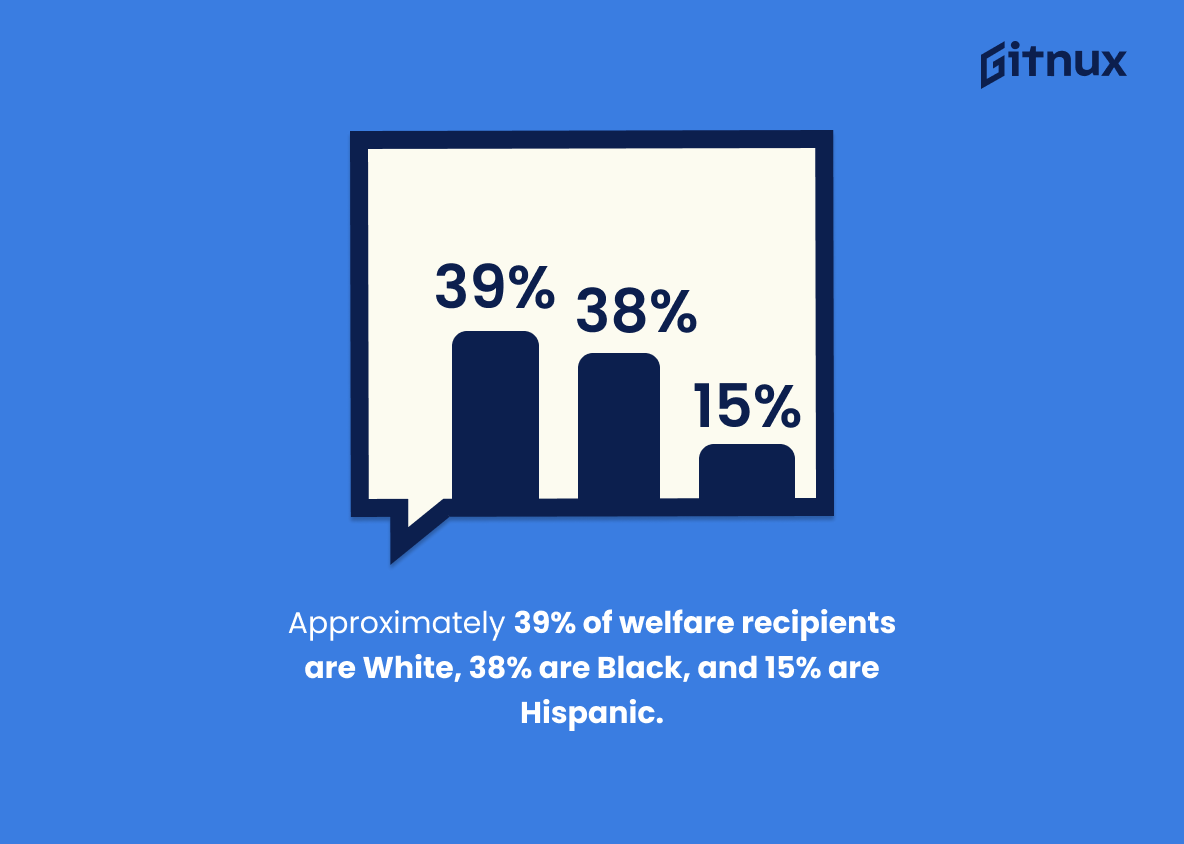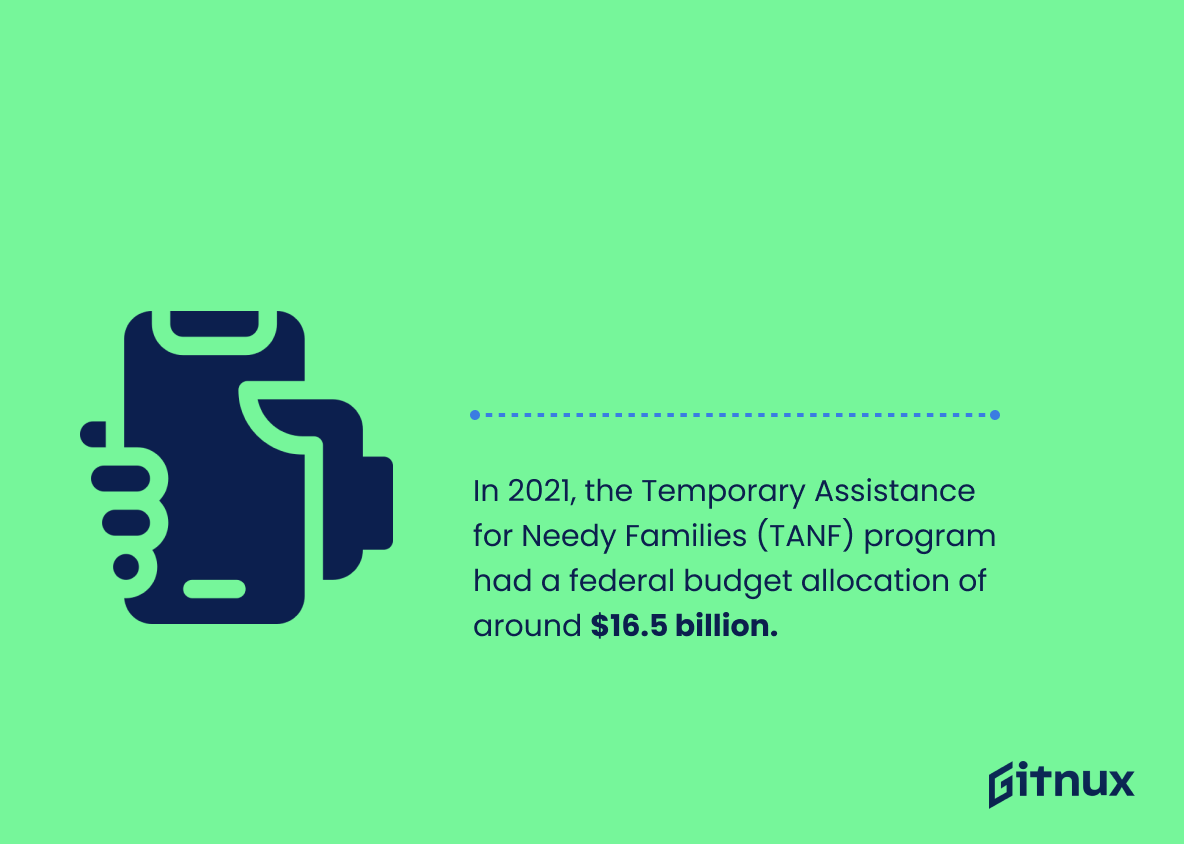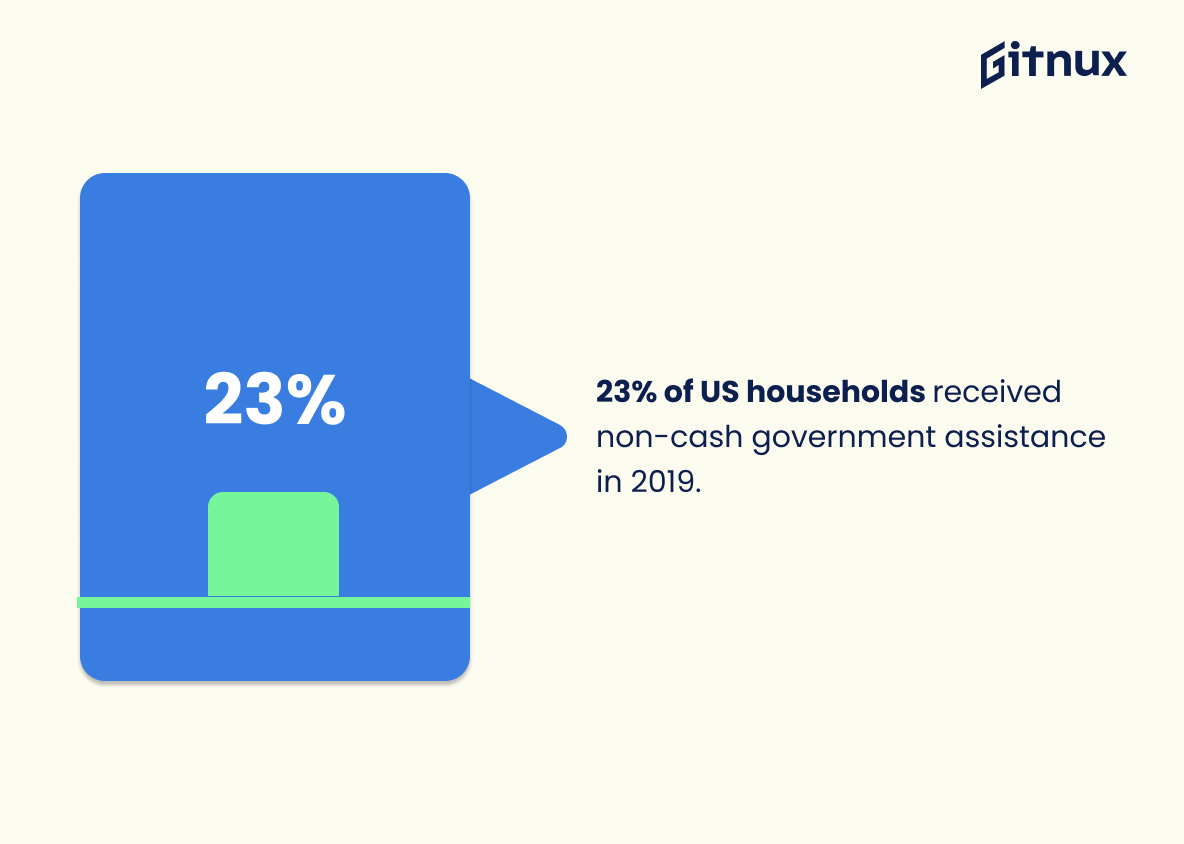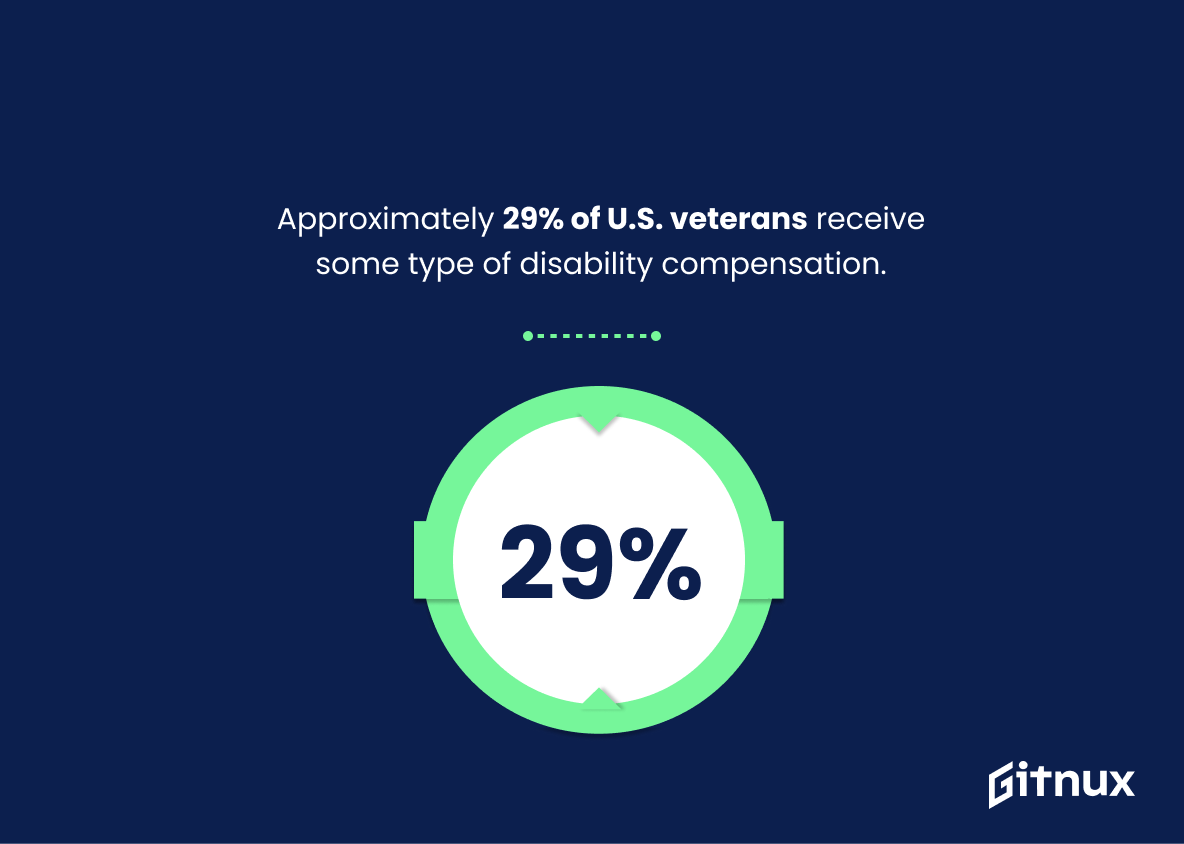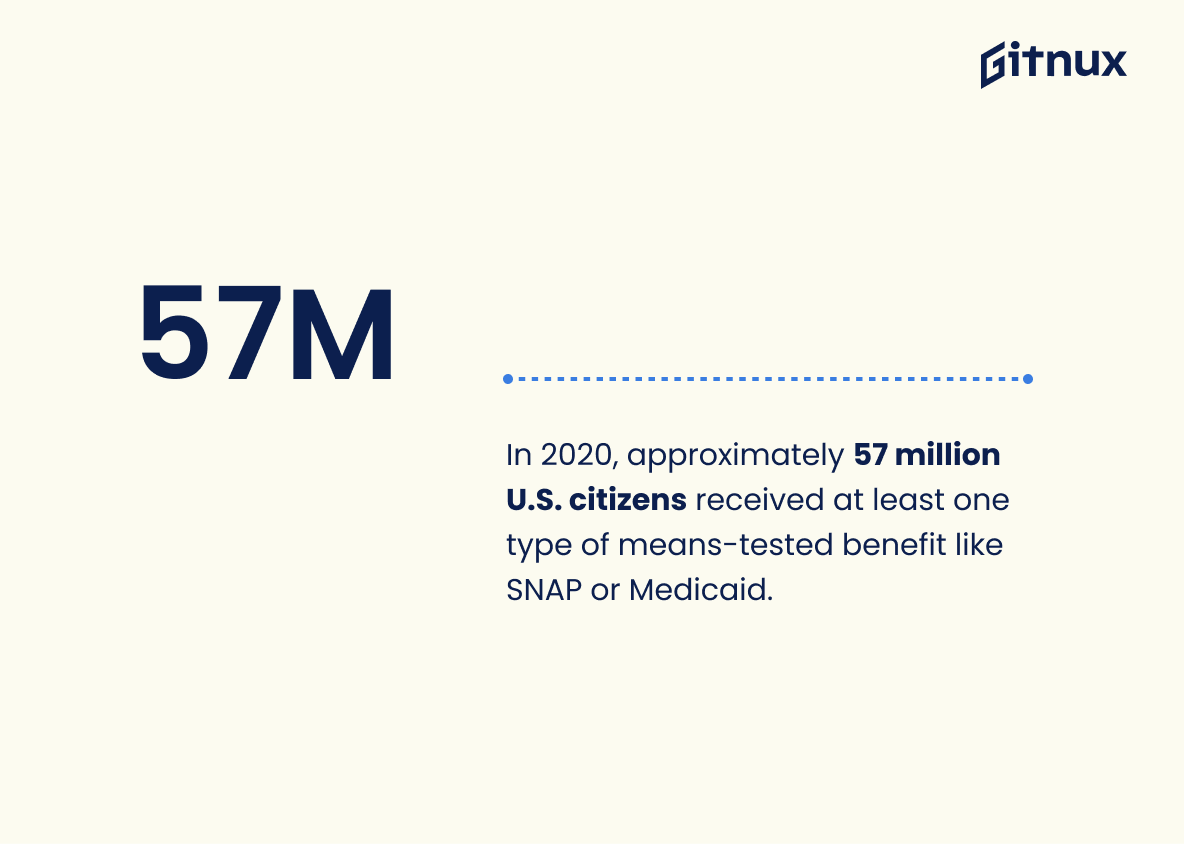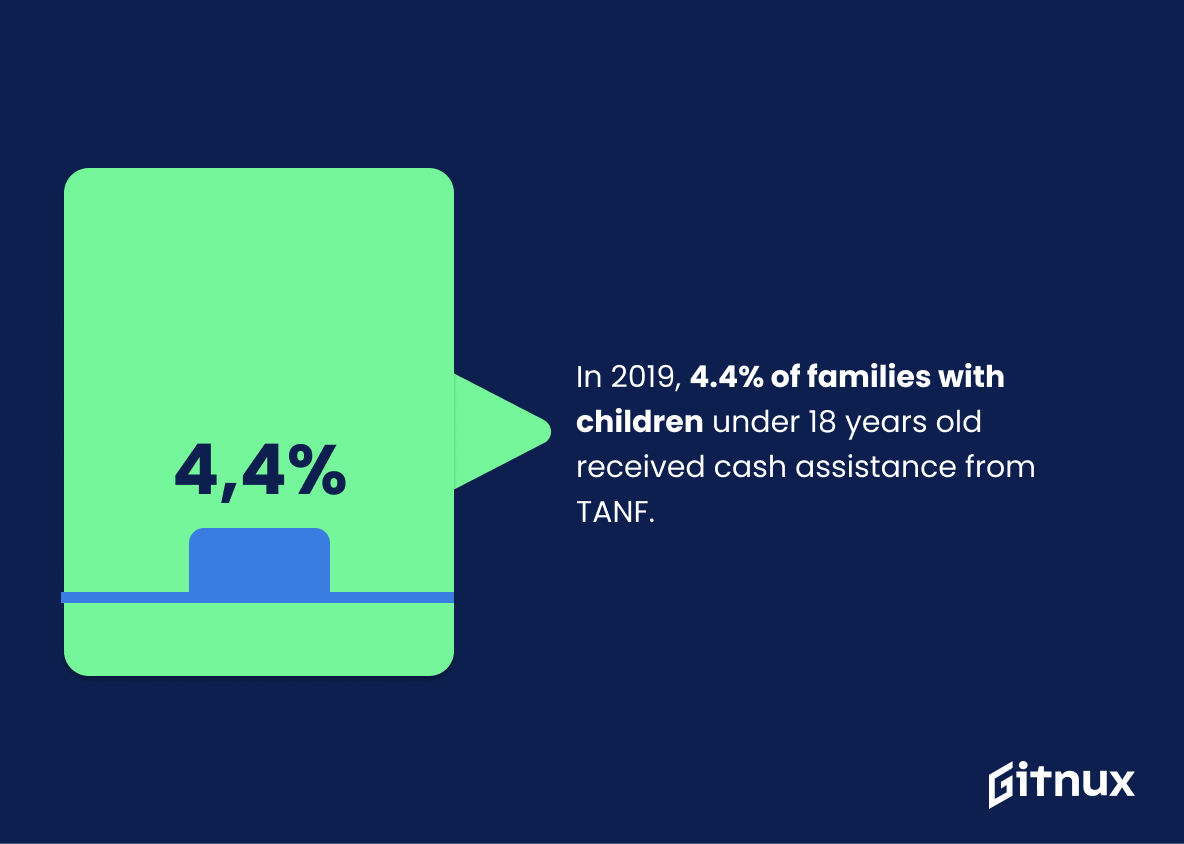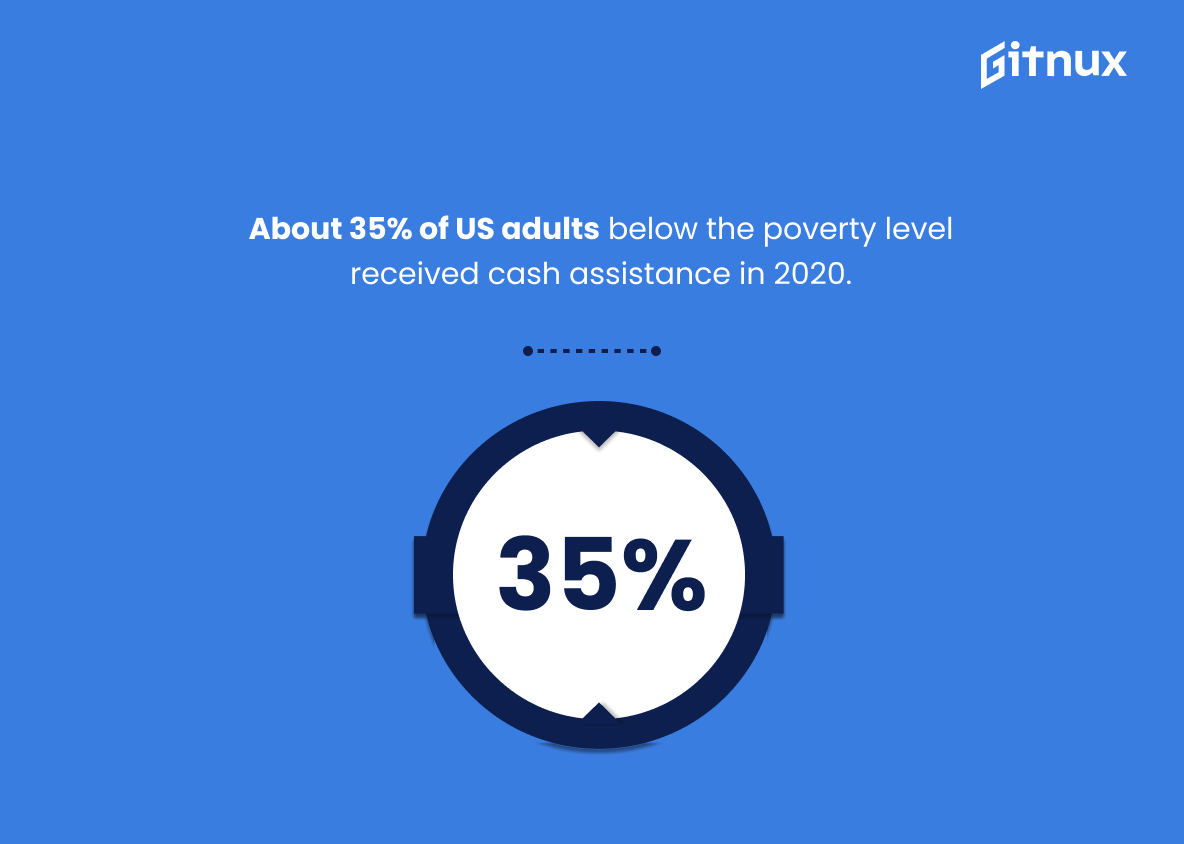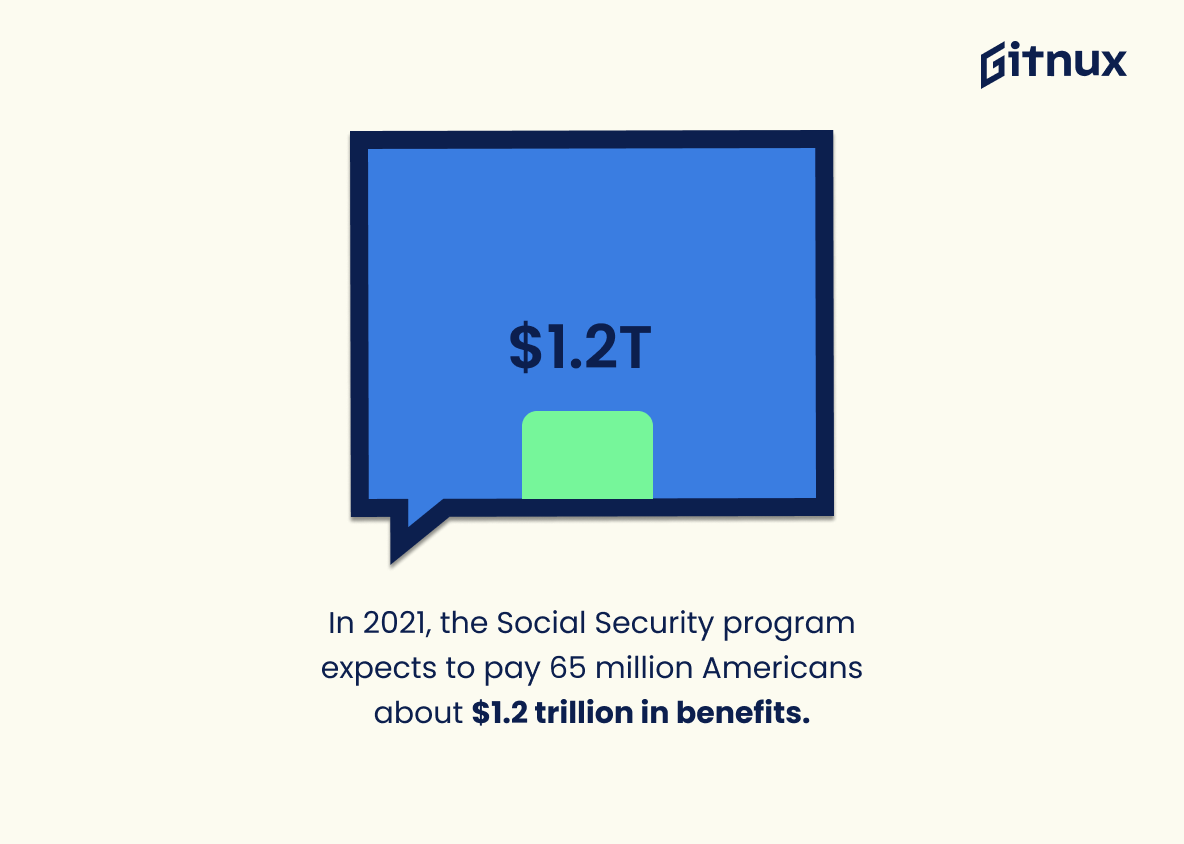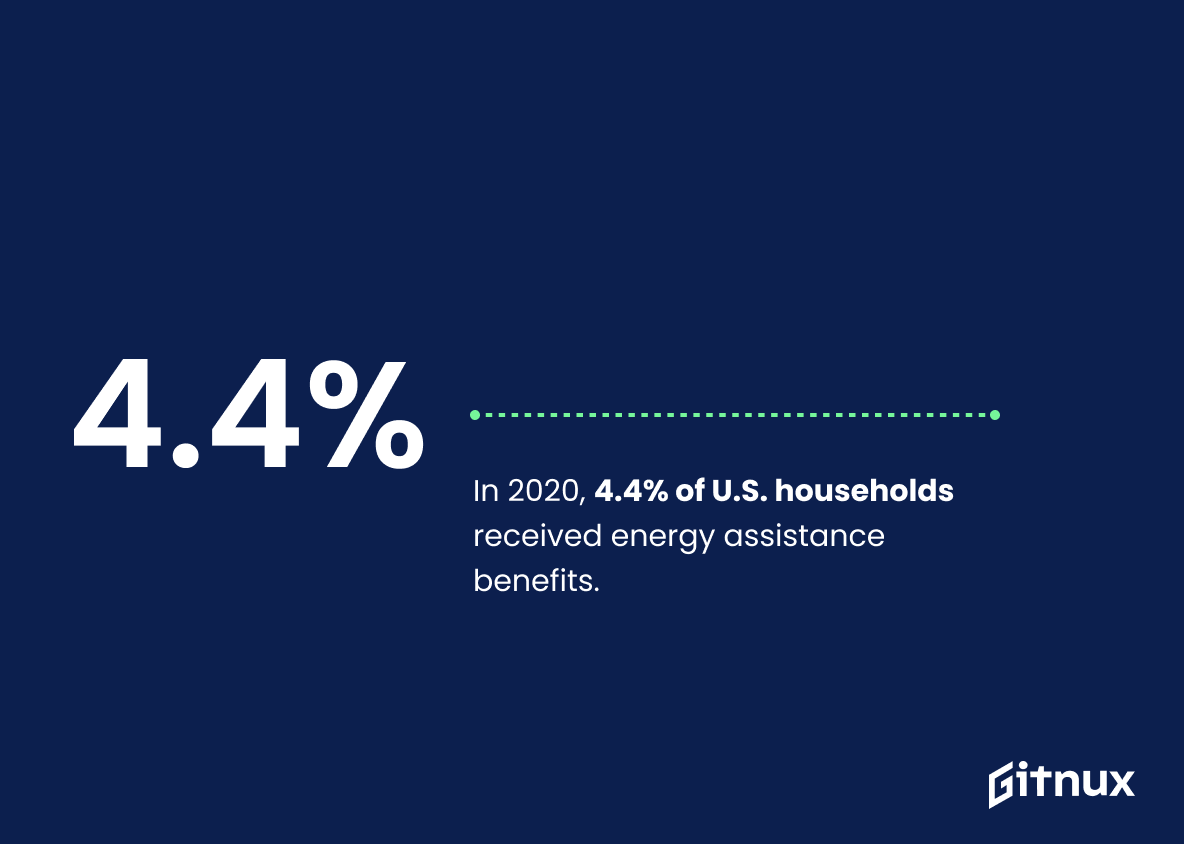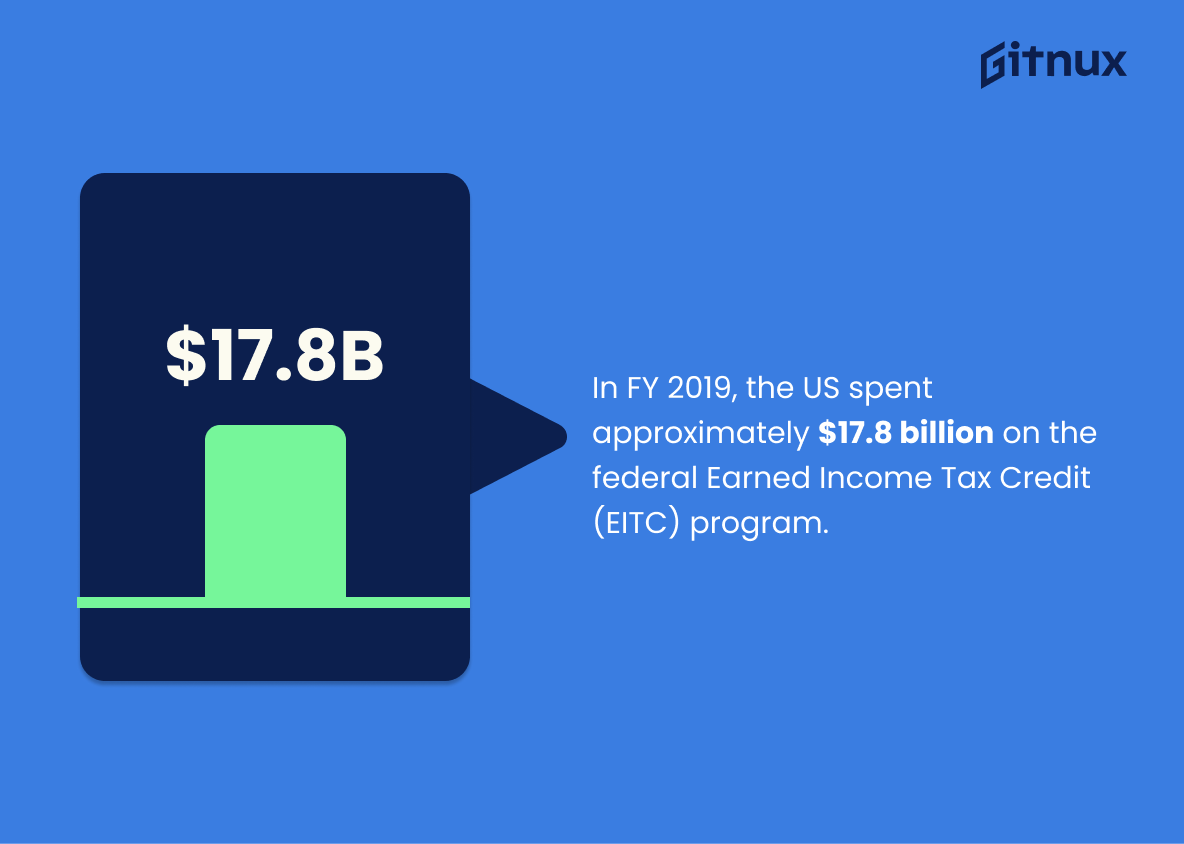Americans rely on a variety of welfare programs to help them meet their basic needs. From Supplemental Nutrition Assistance Program (SNAP) benefits and Temporary Assistance for Needy Families (TANF) to Medicaid, Social Security, and unemployment insurance (UI), these government-funded initiatives provide vital support for millions of people across the country. In this blog post, we will take an in-depth look at current American welfare statistics from 2021 and 2020 that shed light on who is receiving assistance and how much money is being spent on various social safety net programs.
This statistic is a powerful indicator of the current state of welfare in the United States. It shows that despite the economic recovery since the pandemic, there are still millions of people who are relying on welfare benefits to make ends meet. This statistic is a stark reminder of the need for continued support for those who are struggling to make ends meet.
In 2020, around 34 million Americans received Supplemental Nutrition Assistance Program (SNAP) benefits.
This statistic is a stark reminder of the reality of poverty in the United States. It highlights the fact that millions of Americans are struggling to make ends meet and are relying on government assistance to get by. It is a reminder that there is still much work to be done to ensure that all Americans have access to the resources they need to live a healthy and secure life.
Americans Welfare Statistics Overview
In August 2021, approximately 4.3 million people received an unemployment insurance (UI) benefit.
This statistic is a stark reminder of the economic hardship that many Americans are facing due to the pandemic. It highlights the need for continued support for those who have lost their jobs and are struggling to make ends meet. It also serves as a reminder of the importance of providing adequate welfare benefits to those in need.
Approximately 39% of welfare recipients are White, 38% are Black, and 15% are Hispanic.
This statistic is significant in the context of Americans Welfare Statistics because it highlights the racial disparities in the welfare system. It shows that while White Americans make up the majority of welfare recipients, Black and Hispanic Americans are disproportionately represented. This is an important issue to consider when discussing welfare reform, as it highlights the need for policies that are equitable and accessible to all.
In 2021, the Temporary Assistance for Needy Families (TANF) program had a federal budget allocation of around $16.5 billion.
This statistic is a powerful indicator of the importance of the Temporary Assistance for Needy Families (TANF) program in 2021. With a federal budget allocation of around $16.5 billion, it is clear that the government is committed to providing assistance to those in need. This figure speaks to the magnitude of the issue of poverty in the United States and the need for programs like TANF to help those in need. It is a reminder that the government is taking steps to ensure that all Americans have access to the resources they need to live a healthy and productive life.
In 2019, 23% of U.S. households received some form of non-cash government assistance like Medicaid or Supplemental Security Insurance (SSI).
This statistic is a stark reminder of the reality that many Americans face: a lack of financial security. It highlights the fact that a significant portion of the population is relying on government assistance to make ends meet. This statistic is a powerful indicator of the need for more robust social safety nets in the United States, and it should be taken into account when discussing welfare statistics.
Approximately 29% of U.S. veterans receive some type of disability compensation.
This statistic is a stark reminder of the sacrifices made by U.S. veterans and the lasting effects of their service. It highlights the need for continued support for veterans, both in terms of physical and mental health care, as well as financial assistance. It also serves as a reminder of the importance of providing adequate resources to those who have served our country.
In 2020, Medicaid provided health coverage to around 74 million Americans.
This statistic is a powerful reminder of the importance of Medicaid in providing health coverage to millions of Americans. It highlights the vital role Medicaid plays in ensuring that those who are unable to afford health insurance can still access the care they need. It also serves as a stark reminder of the disparities in access to healthcare that still exist in the United States, and the need for continued investment in Medicaid and other public health programs.
About 8.9 million people were enrolled in the Supplemental Security Income (SSI) program as of August 2021.
This statistic is a stark reminder of the millions of Americans who rely on the Supplemental Security Income (SSI) program for financial assistance. It highlights the need for continued support and resources to ensure that those who are enrolled in the program are able to receive the help they need.
In 2020, approximately 57 million U.S. citizens received at least one type of means-tested benefit like SNAP or Medicaid.
This statistic is a stark reminder of the reality that millions of Americans are relying on means-tested benefits to make ends meet. It highlights the need for continued support and assistance for those who are struggling to make ends meet, and it underscores the importance of ensuring that these programs remain accessible and available to those who need them.
In 2019, 4.4% of families with children under 18 years old received cash assistance from TANF.
This statistic is a telling indication of the state of welfare in the United States. It shows that only a small fraction of families with children are receiving assistance from TANF, suggesting that the majority of families are struggling to make ends meet without the help of government aid. This statistic is a stark reminder of the need for more comprehensive welfare programs to ensure that all families have the resources they need to provide for their children.
In 2020, approximately 35.5% of adults in the U.S. with incomes below the poverty level received any cash assistance from the government.
This statistic is a telling indication of the state of welfare in the United States. It highlights the fact that a significant portion of those living in poverty are not receiving the assistance they need to make ends meet. This is a concerning reality that needs to be addressed in order to ensure that all Americans have access to the resources they need to live a healthy and secure life.
In 2019, around 38% of non-elderly adults were enrolled in Medicaid.
This statistic is a telling indication of the state of welfare in America. It shows that a significant portion of the population is relying on Medicaid for their healthcare needs, which suggests that many Americans are struggling to make ends meet. This statistic is a stark reminder of the need for more robust welfare programs to ensure that all citizens have access to the healthcare they need.
In 2021, the Social Security program expects to pay 65 million Americans about $1.2 trillion in benefits.
This statistic is a powerful reminder of the immense impact Social Security has on the lives of millions of Americans. It highlights the importance of the program in providing financial security to those who rely on it, and the sheer scale of the benefits it provides. It also serves as a stark reminder of the need for continued investment in the Social Security program to ensure its long-term sustainability.
In 2020, 4.4% of U.S. households received energy assistance benefits.
This statistic is a telling indication of the financial struggles many American households are facing. It highlights the need for energy assistance benefits, which suggests that a significant portion of the population is unable to afford basic necessities such as energy. This statistic is a stark reminder of the economic hardship that many Americans are facing, and the importance of welfare programs in helping to alleviate some of the burden.
In FY 2019, the United States spent approximately $17.8 billion on the federal Earned Income Tax Credit (EITC) program.
This statistic is a powerful indicator of the importance of the Earned Income Tax Credit (EITC) program in providing financial assistance to Americans. It demonstrates the significant amount of money the US government has invested in the program, which is designed to help low-income families and individuals make ends meet. This statistic is a testament to the government’s commitment to helping those in need, and it serves as a reminder of the importance of welfare programs in providing a safety net for those who are struggling.
Approximately 1 in 6 American children live in households at risk of food insecurity.
This statistic is a stark reminder of the reality that many American children are living in households that are struggling to provide them with basic necessities. It highlights the need for greater support and resources to ensure that all children have access to adequate nutrition and a secure home environment. This is especially important in light of the fact that food insecurity can have long-term negative impacts on a child’s physical and mental health, as well as their academic performance.
In April 2021, an estimated 64.7 million Americans were enrolled in the Children’s Health Insurance Program (CHIP) and Medicaid.
This statistic is a powerful reminder of the importance of the Children’s Health Insurance Program (CHIP) and Medicaid in providing healthcare to millions of Americans. It highlights the vital role these programs play in ensuring that Americans have access to quality healthcare, regardless of their financial situation. This statistic is a testament to the success of these programs in providing healthcare to those who need it most.
Conclusion
The statistics presented in this blog post demonstrate the prevalence of welfare programs and benefits in the United States. In September 2021, around 10.5 million people received welfare benefits while 34 million Americans were enrolled in SNAP that same year. Additionally, 4.3 million people received an unemployment insurance (UI) benefit and 39% of recipients are White, 38% Black, and 15% Hispanic respectively. The Temporary Assistance for Needy Families (TANF) program had a federal budget allocation of $16.5 billion with 23% of U.S households receiving some form non-cash government assistance like Medicaid or Supplemental Security Insurance (SSI). Furthermore 9.2 %of US households experienced food insecurity while 29 % veterans receive disability compensation as well as 74 millions Americans being covered by Medicaid . 8 .9 Million People were enrolled to SSI , 57 Millions citizens at least one type means tested benefit such as SNAP or medicaid , 4 .4 percent families children under 18 years old cash assistance from TANF 35 . 5 Percent adults incomes below poverty level any cash assistance from government 38 percent non elderly adult enrolment on medicaid 1 trillion dollars paid out 65 millions American Social security Program 727 billions spent social safety net 2020 energy assistances benefits 17 point 8 Billions Earned Income Tax Credit 64 point 7 Millions Children Health Insurance Program Enrolment April 2021 1 6 American children live household risk food insecurity These figures show how important these programs are to many individuals across America who rely on them for financial support during difficult times
References
0. – https://www.worldpopulationreview.com
1. – https://www.dol.gov
2. – https://www.ssa.gov
3. – https://www.feedingamerica.org
4. – https://www.census.gov
5. – https://www.eia.gov
6. – https://www.kff.org
7. – https://www.irs.gov
8. – https://www.medicaid.gov
9. – https://www.fas.org
10. – https://www.welfareinfo.org
11. – https://www.statista.com

